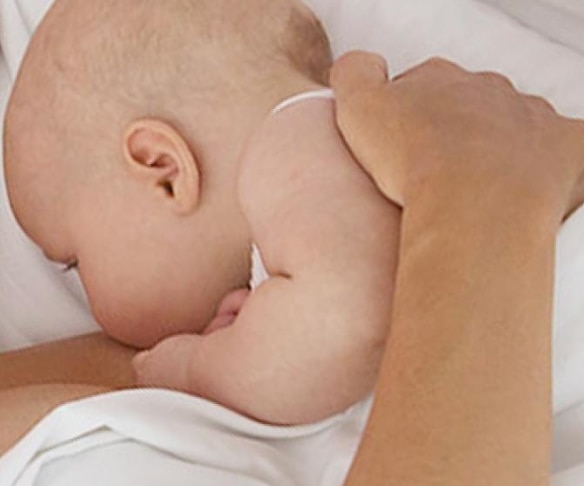Use bottle nipples that mimic the breast experience
Some bottle nipple shapes and flow rates may create a similar flow and mouth positioning to that of a breast. Consider using bottle nipples made of soft silicone with a wider base and a slow flow rate.
Breastfeed first
Offer about half of a typical breastfeeding session first, then offer 1 to 2 oz. of expressed breastmilk in the bottle. This will help your baby be more patient when adjusting to a bottle. If your baby is still hungry, return them to your breast to finish their feeding.
Replace one breastfeeding at a time
If you need to replace more than one breastfeeding session, only replace one session for a bottle every 3 to 5 days. This will help prevent you from becoming engorged if you’re unable to express your breastmilk at those feeding times. Not expressing your milk during feeding times will risk a decreased milk supply.
Warm the bottle under warm running water
Warming the expressed breastmilk will be helpful to mimic the temperature of your naturally warm milk when they breastfeed. Don't heat a bottle to a temperature higher than body temperature. As always, never use a microwave to warm a bottle. Always test a warmed bottle before feeding your baby.
Pace the feeding
Hold your baby in an upright and close feeding position. Hold the bottle more horizontally than straight up and down. Tilt the bottle just enough so the nipple fills with liquid, letting your baby get nourishment and not just air. Then, gently touch the nipple to their cheek, which may cause them instinctively to turn toward you with an opened mouth.
Let someone else try feeding baby
Some babies take a bottle more easily when someone other than mom offers it. Whoever gives the bottle should snuggle with them to maintain the close contact they get during breastfeeding.
Continue to hold the bottle for baby
Never prop the bottle with objects because it may interfere with baby swallowing and decreases their important physical interaction time during feedings. Your baby should always be held during feedings.
Take a burp break
Pause to burp your baby after every 1 to 2 fl. oz., or if they push the bottle away or turns their head. If your baby continues to push the bottle away, they may be telling you they are full and to stop feeding. Frequent burping helps reduce the chance of spitting up and fussiness from stomach gas.
Burping positions
- Sitting up: sit baby up on your lap and support their head and chest with one hand placed on their front. Lean them slightly forward; gently rub or pat baby's back.
- Over the shoulder: lean baby up against you, with their chin resting on your shoulder; rub or gently pat baby's back.
- Across the lap: lay baby across your lap with their chest supported on your lap, then gently rub or pat baby's back.
There's no need to get frustrated
If your little one doesn't accept a bottle on your first attempt—don't worry, it's totally normal. You can always try again another day.





